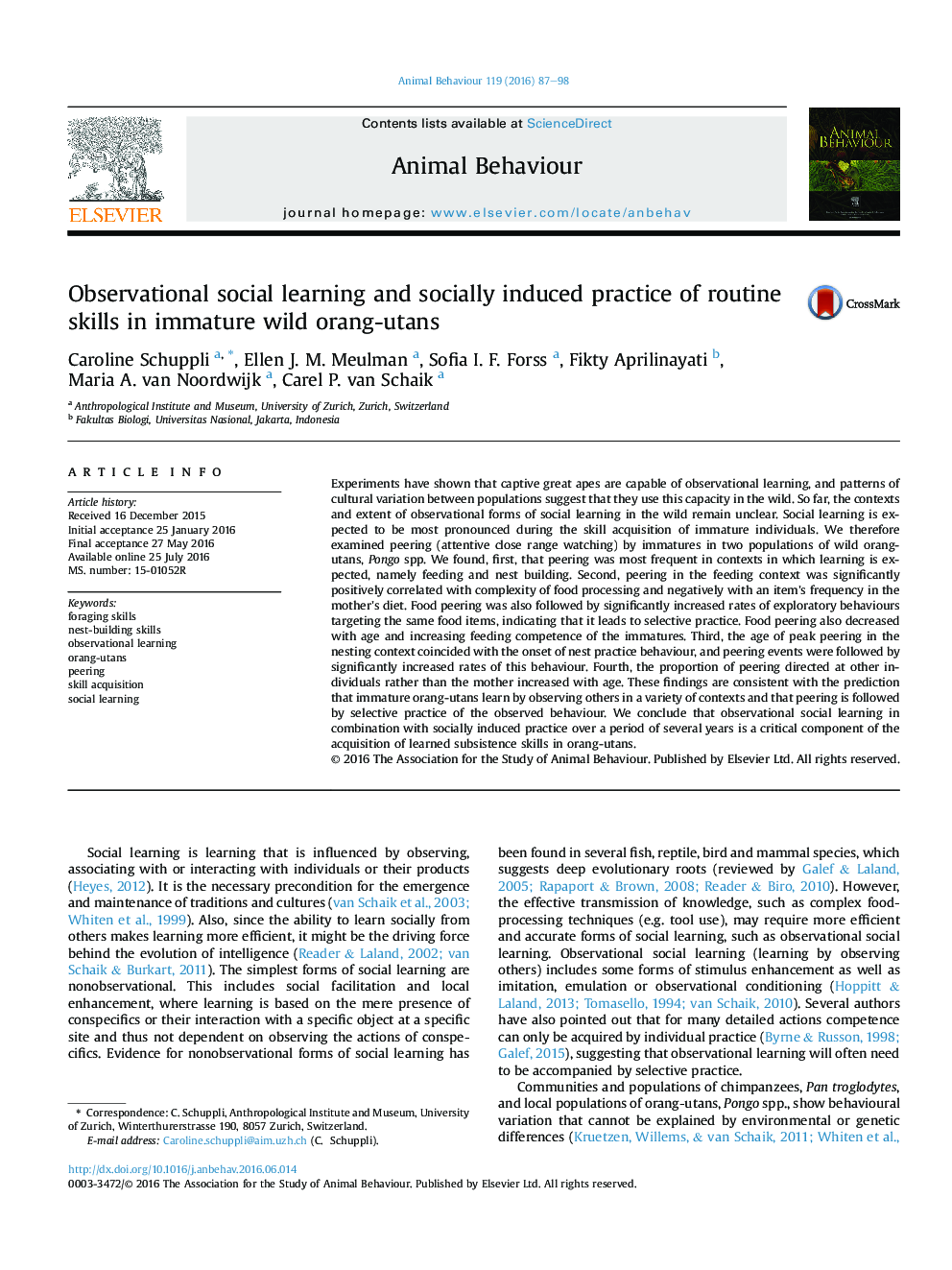| کد مقاله | کد نشریه | سال انتشار | مقاله انگلیسی | نسخه تمام متن |
|---|---|---|---|---|
| 2416265 | 1552209 | 2016 | 12 صفحه PDF | دانلود رایگان |
• Wild immature orang-utans learn their routine skills by observing others (peering).
• Most peering happens in the feeding and nest-building contexts.
• Peering is followed by selective practice of the observed behaviour.
• With increasing age the preference for role models other than the mother increases.
Experiments have shown that captive great apes are capable of observational learning, and patterns of cultural variation between populations suggest that they use this capacity in the wild. So far, the contexts and extent of observational forms of social learning in the wild remain unclear. Social learning is expected to be most pronounced during the skill acquisition of immature individuals. We therefore examined peering (attentive close range watching) by immatures in two populations of wild orang-utans, Pongo spp. We found, first, that peering was most frequent in contexts in which learning is expected, namely feeding and nest building. Second, peering in the feeding context was significantly positively correlated with complexity of food processing and negatively with an item's frequency in the mother's diet. Food peering was also followed by significantly increased rates of exploratory behaviours targeting the same food items, indicating that it leads to selective practice. Food peering also decreased with age and increasing feeding competence of the immatures. Third, the age of peak peering in the nesting context coincided with the onset of nest practice behaviour, and peering events were followed by significantly increased rates of this behaviour. Fourth, the proportion of peering directed at other individuals rather than the mother increased with age. These findings are consistent with the prediction that immature orang-utans learn by observing others in a variety of contexts and that peering is followed by selective practice of the observed behaviour. We conclude that observational social learning in combination with socially induced practice over a period of several years is a critical component of the acquisition of learned subsistence skills in orang-utans.
Journal: Animal Behaviour - Volume 119, September 2016, Pages 87–98
